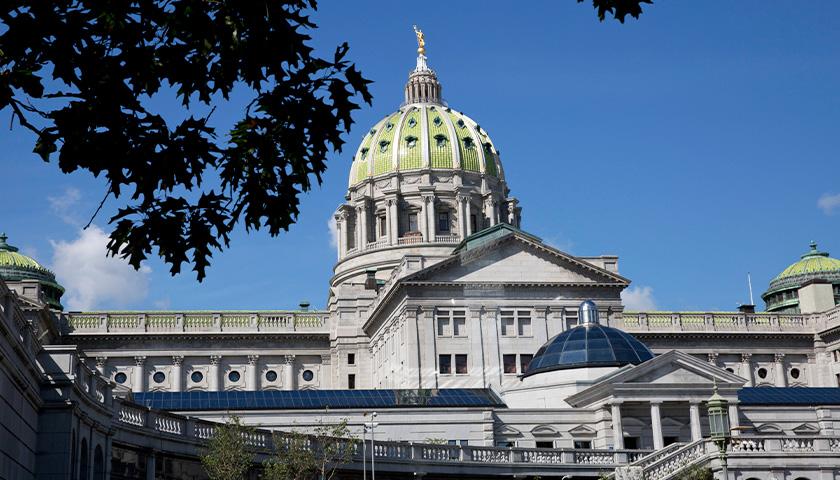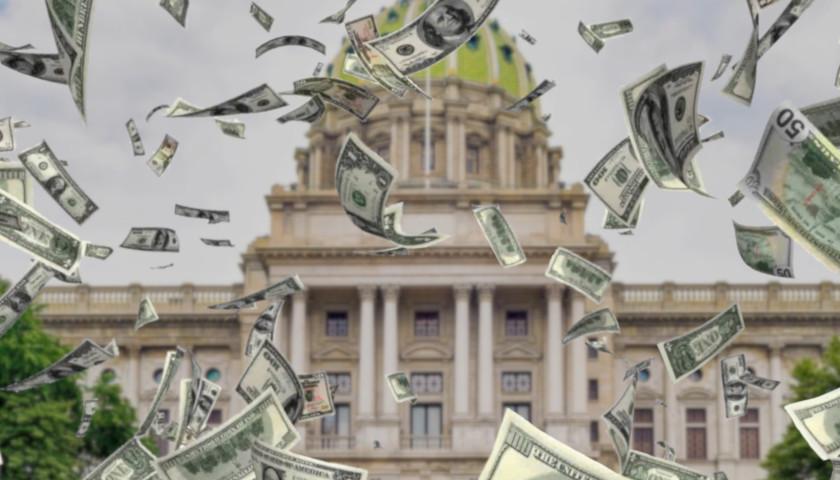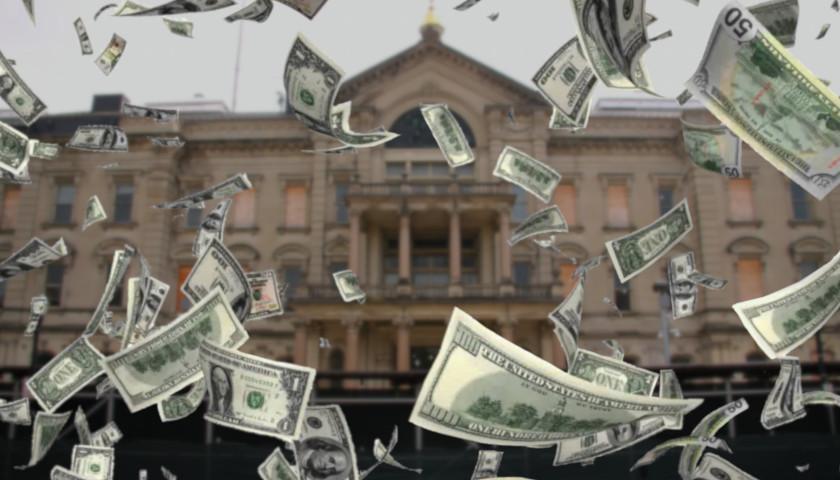According to a new analysis by the nonprofit American Legislative Exchange Council (ALEC), Pennsylvania ranks 46th among states for economic performance and 35th for economic outlook.
In its 16th edition, ALEC’s Rich States, Poor States compares states’ economic posture based on 15 policy factors. Pennsylvania’s performance only ranked ahead of West Virginia, Connecticut, Alaska, and — in dead last — Louisiana.
Florida led the pack on performance, followed by Utah, Arizona, Idaho and Colorado. ALEC examined three indicators of states’ present dynamism. The Keystone State lags behind the vast majority in all three: The commonwealth ranks 38th in cumulative gross-domestic-product growth over the last decade, 45th in net domestic migration over that period, and 43rd in non-farm payroll employment.
States the organization judged best poised in terms of outlook were, in descending order, Utah, North Carolina, Arizona, Idaho, and Oklahoma.
States ranking last for economic prospects were Illinois, New Jersey, Minnesota, Vermont, and New York. Pennsylvania is doing somewhat better, having crawled from 39th place over the last six years. Jonathan Williams, ALEC’s executive vice president for policy and chief economist who wrote the report with renowned scholars Stephen Moore and Arthur Laffer, said that, despite incremental progress, Pennsylvania has vast strides left to make for residents’ economic benefit.
“Pennsylvania’s economic outlook is still well below average,” he told The Pennsylvania Daily Star. “There’re a lot of areas for improvement, certainly when you’re comparing yourself to states in the region such as New Jersey and New York, Pennsylvania by comparison looks relatively competitive. But in the broader spectrum of where states are moving nationally, Pennsylvania is behind and it needs to really catch up with some of these states that are becoming more competitive.”
Williams and his colleagues posited that the commonwealth’s competitiveness suffers in numerous policy areas, including taxation.
For one thing, the state imposes one of the highest business taxes in the nation, and recent legislation has only begun to bring that rate down; the corporate net income tax (CNIT), long at 9.99 percent, will fall gradually to 4.99 percent in 2031. While Pennsylvania levies a relatively modest flat personal income tax of 3.07 percent, residents of Philadelphia, Pittsburgh, and various other localities pay municipal wage taxes on top of it.
Keystone Staters additionally pay generally average real-estate taxes and somewhat low sales taxes, but the state also imposes an inheritance tax and especially high rates on miscellaneous taxes like gasoline and liquor.
Williams said Pennsylvania will need to notice other states’ recent actions, as many enacted substantial personal income tax cuts. Neighboring West Virginia, for instance, cut its income tax this spring by an average of 21.25 percent.
“If Pennsylvania does nothing in this legislative session or in future legislative sessions to improve its economic outlook, I think it really does run the risk of falling behind by standing still because so many states are moving aggressively in the direction of cutting taxes and becoming more competitive as states,” he explained.
ALEC said Pennsylvania could make reforms to become more business-friendly, including reforming its liability system to mitigate lawsuit abuse and adopting a right-to-work law to allow nonunion workers to refuse to pay union dues. Many states, including West Virginia, have lately done the latter, and Williams said doing so has enticed many businesses to move there.
“We find, at least for many businesses depending on their type of business of course, they won’t even consider a state for an investment unless it’s a right-to-work state,” he said.
The commonwealth’s economic disadvantages are manifesting in population and migration figures. ALEC’s study found absolute domestic migration — the number of newcomers from other states minus the number of state residents leaving — totaled -246,499 from 2012 to 2021. While the trend was briefly interrupted in 2021 when many workers in expensive cities like New York chose to relocate as post-COVID work arrangements gave them more flexibility, Williams and others who have pointed out the migration problem fear it will continue.
“Pennsylvania’s had a population problem for a long time,” Elizabeth Stelle, director of policy analysis at the Harrisburg-based Commonwealth Foundation, told The Daily Star. “And at this point we’re just seeing the long-term effects of our demographic changes that have been in the making for decades. And what that really indicates is that we are not a state that attracts workers; we are a state that seems to attract retirees, but we’re not a state that attracts jobs, we’re not a state that attracts entrepreneurs.”
And the population is not only shrinking; it’s aging. Pennsylvania’s Independent Fiscal Office projects that the state will lose 250,000 working-age adults between 2020 and 2025. According to Pennsylvania State University’s Social Science Research Institute, one-fifth of state residents will be 65 or older by 2030.
This makes the commonwealth’s need to bring in more working-age residents especially pressing. A ballooning seniors-to-workers ratio will lead to greater Medicaid costs as the healthcare program for the poor and disabled is significantly state-funded and sees its number of elderly patients swell quickly.
Stelle agreed with Williams that taxes are a major reason Pennsylvania is currently underperforming. Earlier this month, her think tank published a survey finding that 44 percent of polled voters said they have or knew someone who has thought of departing the state for another state. Over half cited cost of living as a key factor in that consideration, suggesting, in part, that many feel overtaxed.
She suggested accelerating the reduction of the CNIT would be a good place to start in allaying the tax burden and making the commonwealth more economically vibrant.
“We’re in a situation now where it’s very clear that we’re going to be dealing with migration challenges and population loss for a long time and we can either slide into that decline deeper or we can make Pennsylvania more attractive,” she said. “And it’s really up to Pennsylvanians as to which route they choose to go, but there are many, many policies that we could enact in Pennsylvania to make it more competitive.”
– – –
Bradley Vasoli is managing editor of The Pennsylvania Daily Star. Follow Brad on Twitter at @BVasoli. Email tips to [email protected].
Photo “Pennsylvania State Capitol” by Governor Tom Wolf. CC BY 2.0.








